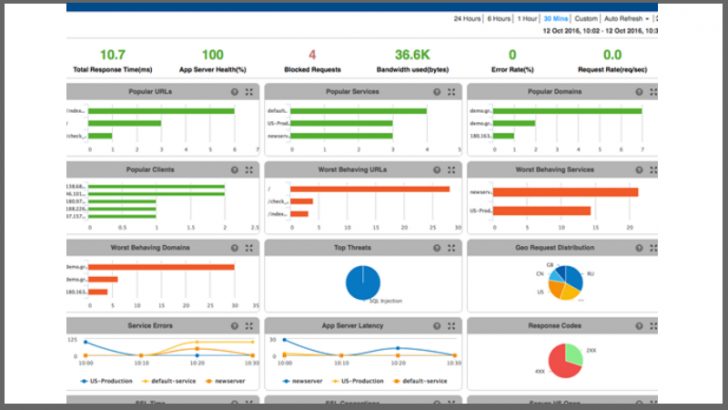

Regional Director, Western Europe at A10 Networks
A10 Networks has announced the general availability of its A10 Lightning Application Delivery Service (ADS). The cloud-based solution enables companies to leverage a consumption-based model in the cloud rather than relying on on-premises hardware. Enterprise Times spoke to Mike Hemes, Regional Director, Western Europe at A10 Networks to get a deeper understanding of the launch.
Hemes joined A10 Networks in September and this is his first major launch with the company. He introduced the new product by saying: “We don’t think every company is going to move 100% to the cloud. So what we need to have is the ability to deliver ADC as a cloud native application, but to support that in hybrid Public and private cloud environment s . So that we can spin up instances and securely deliver applications and development environment as and when the customer needs it.”
Leveraging Appcito
This technology includes that developed by Appcito, an acquisition made in July 2016. The ADC service is hosted in the US in what is believed to be a private cloud environment owned by A10 Networks. Customers will deploy virtual appliances within their own sites, or those of their cloud partners such as AWS, Google and Azure. The difference is that these virtual appliances are not purchased but can be spun up and down based on requirements. Charges are consumption-based according to Hemes although when questioned he confirmed that there is a minimum term of either one or three years.
Data Sovereignty is not an issue
A10 do not believe that the data sovereignty question comes into play. An A10 network spokeperson confirmed this and said: “A10 Lightning controller is currently hosted in the US. The Lightning ADCs run in customer’s environment – in which ever cloud and country it runs. The actual client to server traffic is sent through the ADC and does NOT go via the controller. The Controller collects only metrics data and so data sovereignty issues may not apply. “
Interestingly however they recognize that this or perhaps latency might become an issue and the spokesperson continued “We are also planning to provide the A10 Controller hosted within EU later in 2017.”
Components
A10 Networks has developed Lightning for simplicity. Its aim is to reduce the administration overhead for network operations teams. Many struggle with the configuration of on-premises ADC and routers for development environments. The new virtual appliances act as full proxy software and execute layer 4-7 application load balancing. This enables the deployment of application security policies across multiple clouds.
The portal is self service and used for managing the infrastructure on a per application basis. This application centric approach is one of the views that users can use to show the collected metrics. Hemes explained the available reporting as including: “You can look at the popular URL’s. We will give the response times across popular URL’s, applications and domains. The worst behaving applications, URLS and worst behaving service are included as well as popular services and clients, The Top threats are there, the distribution across geographies and response codes. Server latency and server errors, we can give all of those reports in a single pain of glass, and then drill down further.”
It doesn’t however drill down deeper into database performance. It will be interesting to see what the integration capabilities are for partners from A10 going forward. The solution has a RESTful interface and API’s are available to integrate with Chef, Ansible and Jenkins for automated deployment already.
So who will buy it?
A10 Networks has had success in the large enterprise and carrier market. Hemes also commented that they have a strong presence in both the finance and gaming industries. The solution, he believes will not just appeal to their traditional market but also to mid-sized companies. Key targets are those with development departments who look to deploy applications to clients and/or customers. If the price is competitive against the solutions those companies currently use this could be an interesting market for A10. However the cost of sale against the profitability of that market may make it difficult for A10 to get traction.
Conclusion
This is a natural progression for the application delivery market. As its target market start using the cloud more and more A10 is right to deploy this solution. The problem for it is this might be a shrinking market, especially in that mid-market. Most companies are looking to cloud-based solutions to reduce their reliance on development and implement configurable solutions. Despite that there is certainly a segment in the SaaS that might be especially interested in this new product.

























